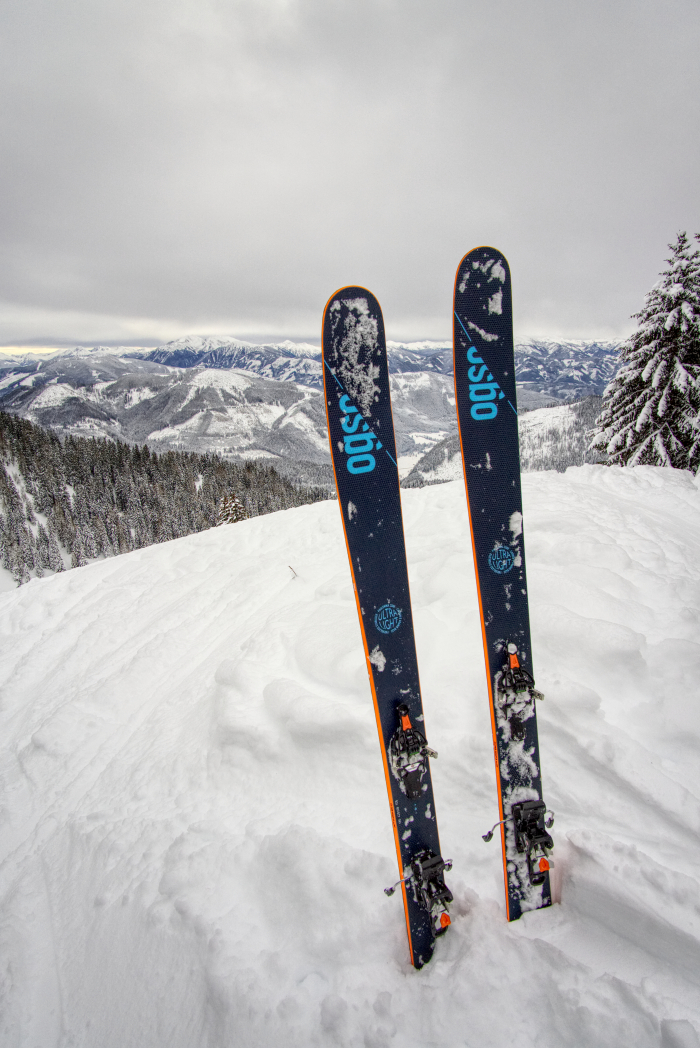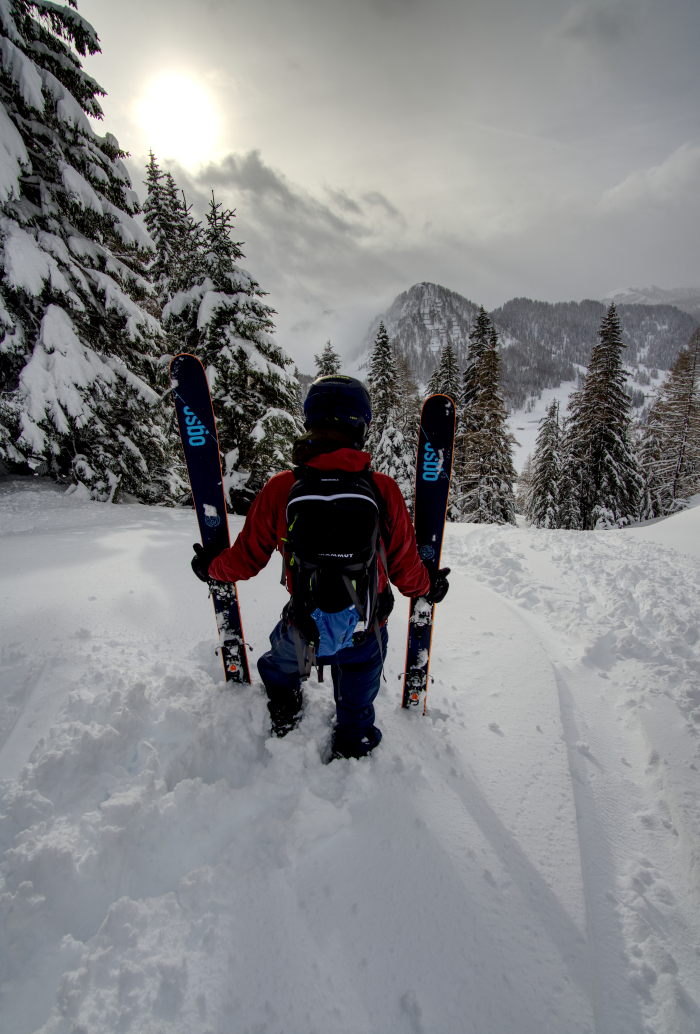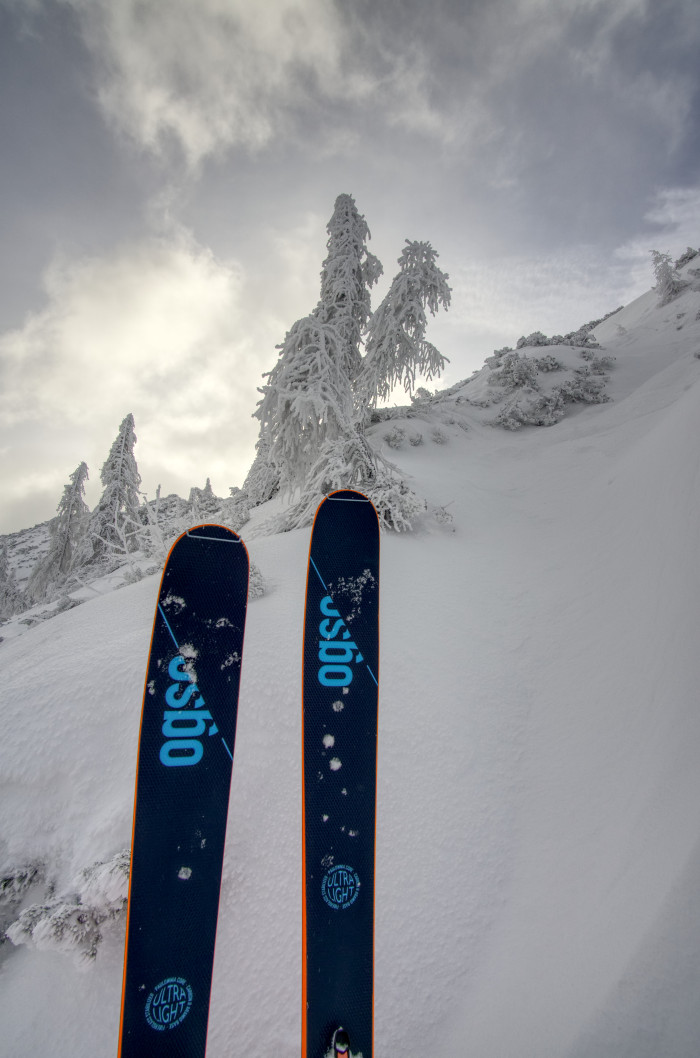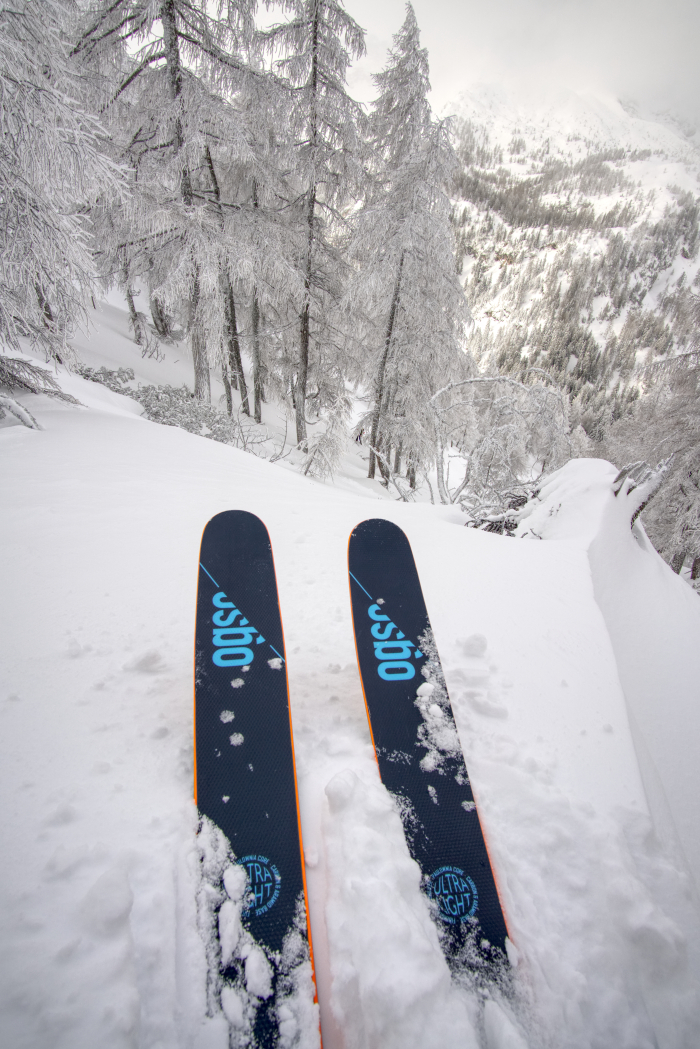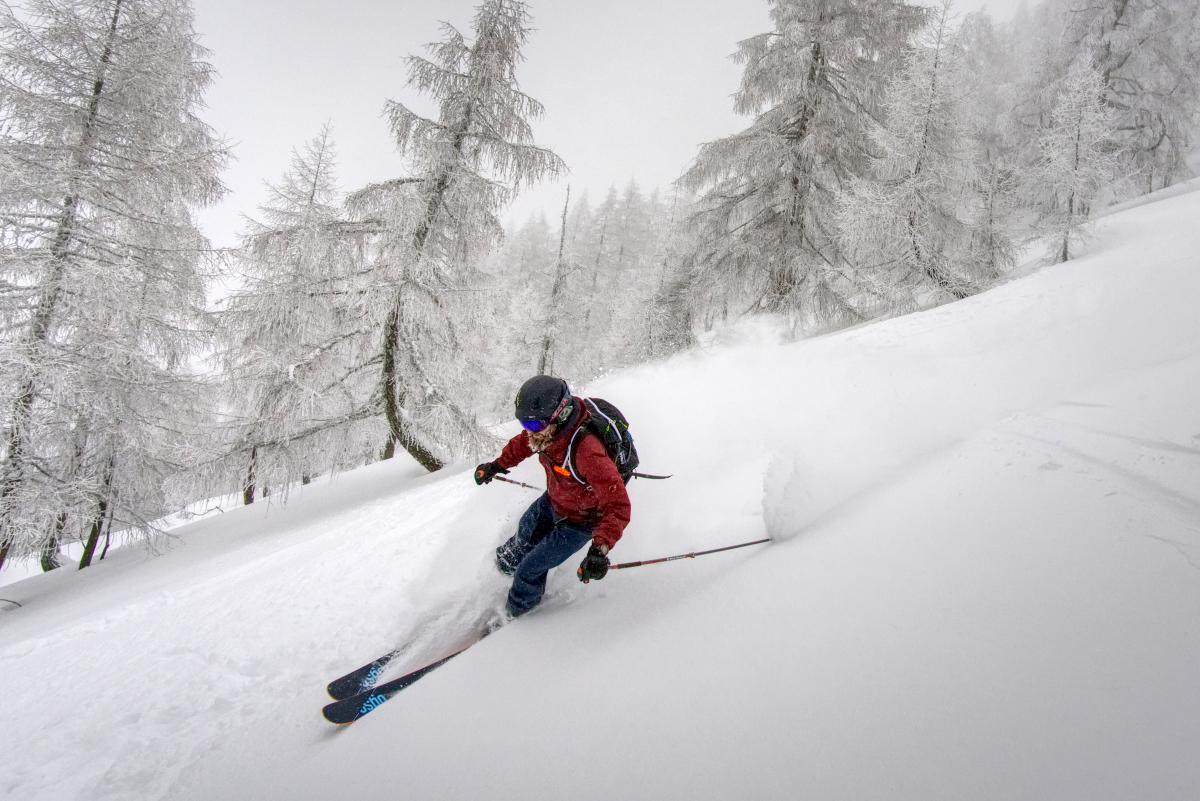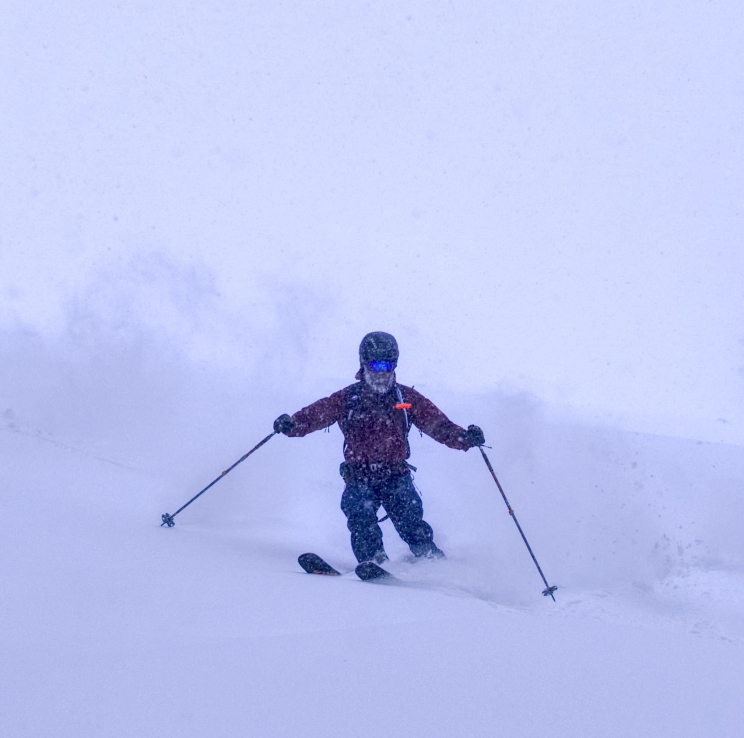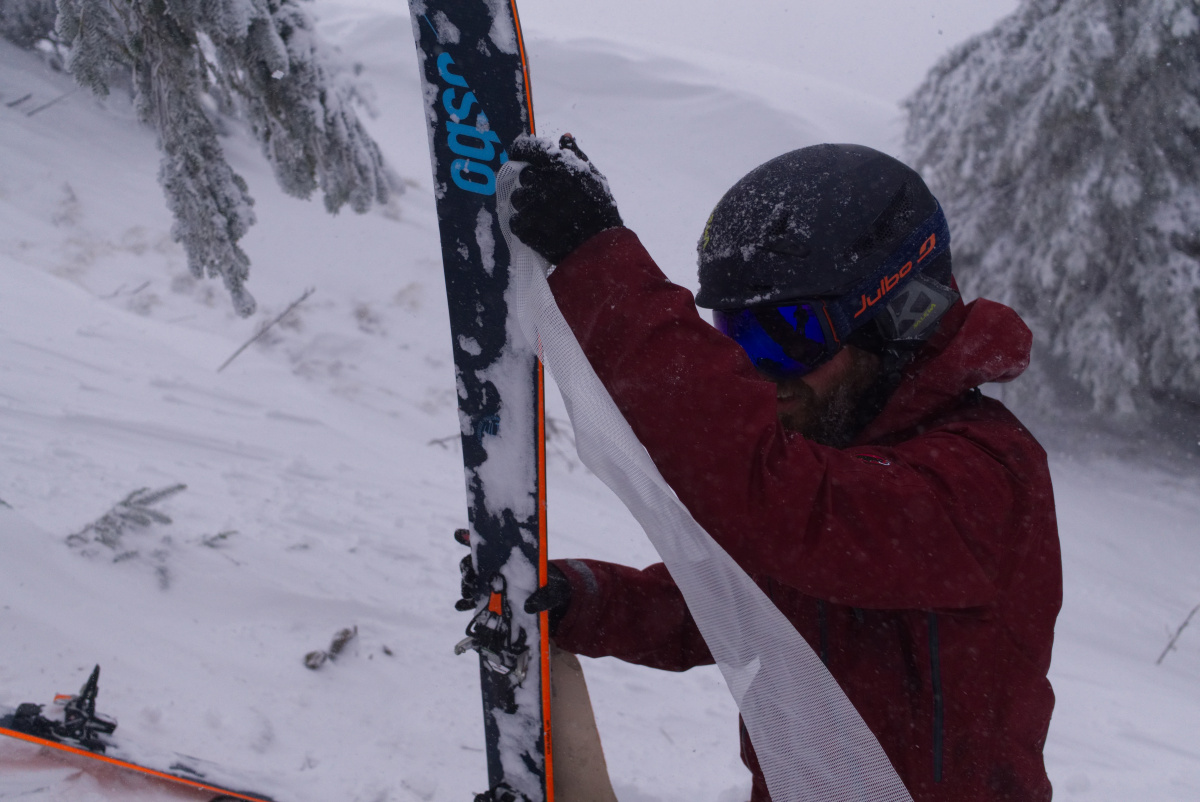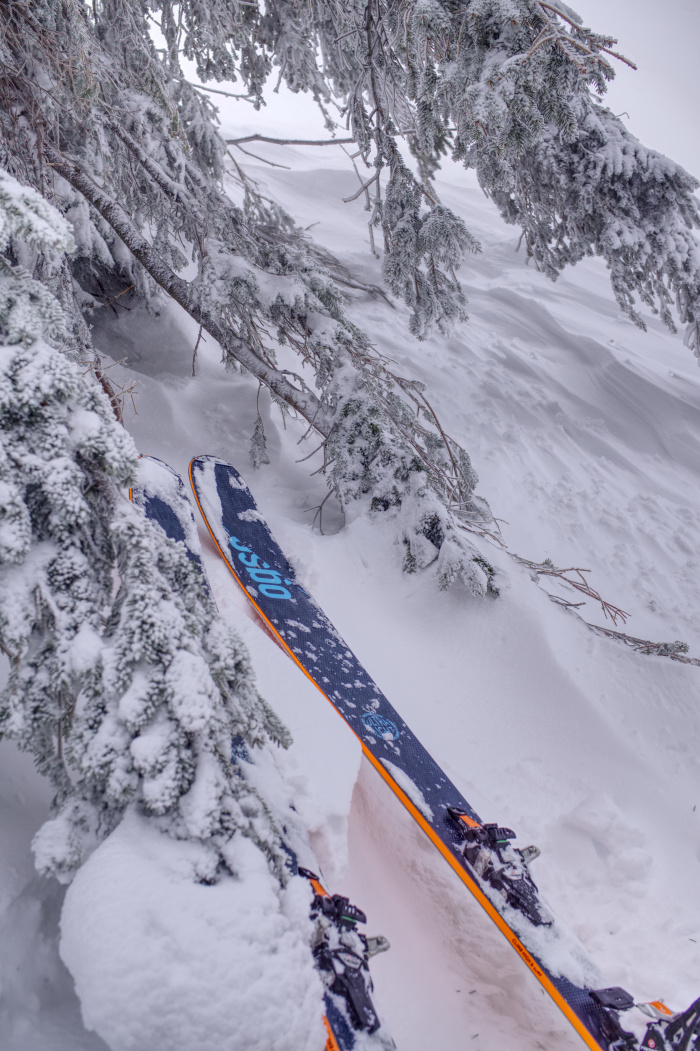In the spring of 2018, almost every year, I followed the press releases of many brands in the outdoor and mountaineering sector and became aware of the French brand Ogso. What I discovered was a rather small but very fine assortment of different ski models, designed primarily for the “off-piste area”, that is for off-piste terrain. The idea of freeriding is maintained during the naming, so the ski models are named after famous ski slopes and gullies.
Ogso manufactures skis only since 2015 and is therefore still rather unknown in German-speaking countries. The skis are designed to work in any snow condition – with design limitations, of course. For example, a 100 mm wide ski will not feel as good on an icy track as a 70 mm ski. The aim of the ski owners was not to design a ski that is best in one section, but to function in all conditions, to support the skier and to enable energy-saving skiing fun – a real all-rounder!
What really impressed me when browsing through the range was the Ultralight series – about 1500 g for a ski with 106 mm under the binding is very impressive. Without further ado, I decided to contact Ogso if they would provide one of their skis for testing purposes. Only a little later came the very nice and surprising answer, Ogso would give me the “Ogso Schwarztor 100s” from the Ultralight series for free! In return, I agreed to test the ski in all conditions and record my experiences on my blog. So this review was done in cooperation with Ogso, and I want to emphasize that this is my honest and unfiltered opinion (which is also Ogso’s express wish!).
Ogso Schwarztor 100s
“Climb high and surf” – this is the motto that graces the side of the ski and that is also a program. It is part of the Carbon Ultralight series and the 100s series, which refers to the middle width of the ski. Due to its construction, it is light enough for longer climbs, but also wide enough to “surf” on the snow. There is still a variant of the Ultralight series with 110 mm and more (depending on the length) under the binding for even more powder performance, but I find that the center width of 100 mm (or 106 mm with me) more than enough for the Austrian East Alps Powder Days is.
For more up-to-date touring skiers, who still want downhill performance, there is a variant with 90 mm (depending on the length also a bit more) and a variant with a good 80 mm.
That’s what the manufacturer says:
The brand new Black Gate 100s turns and permits you to pivot. It’s energetic and versatile.
The Schwarztor ski ensures a balanced skiing, so you float smoothly and relaxed with an absolute exceptional experience. It gives an impression of being in the steep and in the very technical terrain or in the trees. At the same time you can go amazingly fast and stable. ”
Here are the specifications for the Schwarztor in 186 cm length summarized:
- Weight according to manufacturer: 1575 g
- Width in mm lt. Manufacturer: Tip – middle – Tail: 138 – 106 – 122
- Radius: 20 m
- Recommended shoe center: 79 cm from the end of the ski
I tested the ski with the Fritschi Tecton 12 binding and the Atomic Hawx Ultra XTD 130 ski boot.
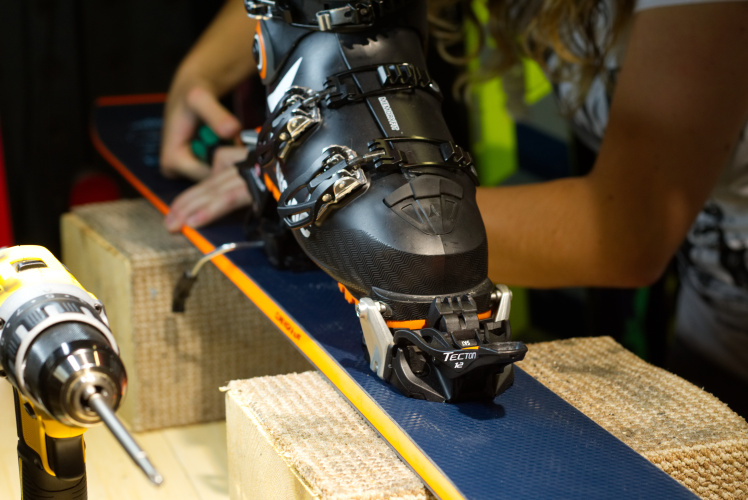
Features of the Ogso Schwarztor 100s
The Ogso Schwarztor is equipped with a very strong rocker on the tip of the ski, according to Ogso the “super rocker”, which gives it a good boost and with a center width of 106 mm (in my case) is rather unusual. Such strong rockers can only be found on really wide freeride skis.
From this rocker results in a rather short chamber – the area under the bond with bias. This in turn goes into a tail rocker, which is not as pronounced as the tip of the ski. Both ends of the ski have an “early-rise”, which means they start to bend up very soon, making it easier to start the turns.
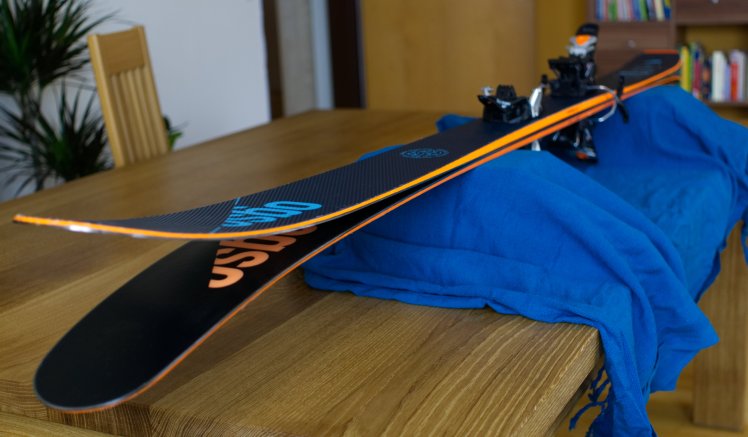
The construction at the end of the ski (for me as a tourer very practical) is not a “twin-tip construction” such as for freestyle skis, instead, a straight end made of plastic, which makes it very easy to hang skins and no adapter as is necessary with twin-tip skis.
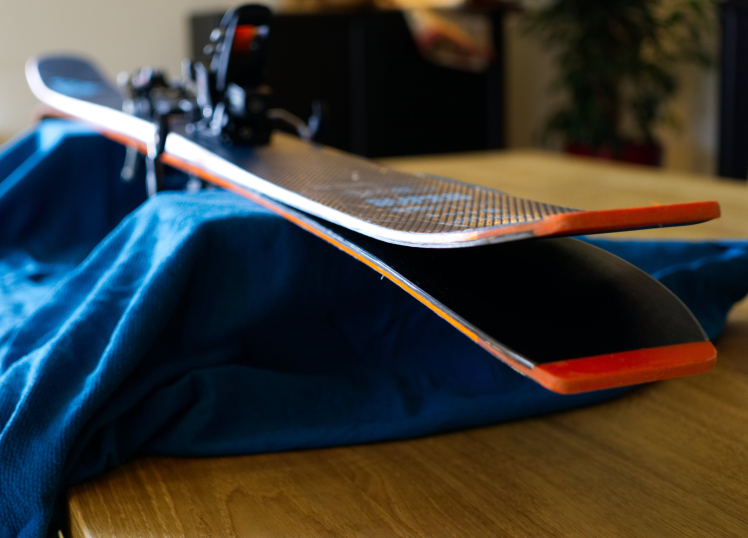
The recommended ski boot center is freeride-optimized and rather further down, but can still be adjusted depending on ability and style of driving – but you should get advice from specialist dealers.
You should definitely combine this ski with a departure-oriented binding as well as a fixed touring boot (For my choice of binding, here is my contribution to touring bindings ). In order to be able to fully enjoy the ultralight qualities of the ski, the weight should ideally be taken into account here as well.
First tours – the ski on the slopes, in the powder snow and in the mud
Since the tour season started late, I mastered the first altitude on piste tours and had rather suboptimal conditions for enjoyable downhills. At least I was able to test the ski under worst-case conditions – icy artificial snow mixed with soft, slushy snow. Even on the narrow snow belt, which was available to me, I was able to relax despite the bad conditions and leave without much effort.
The first meters in the powder snow were simply fantastic. With almost 50 cm of fresh snow, the ski swam perfectly. It allows me short, controlled turns without much effort in the steep and with longer curve radii at increased speed, he makes really fun.
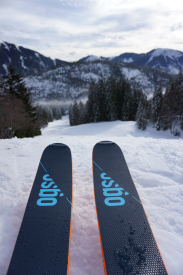
The classic “rear-putting”, which is often used by many skiers to make the ski float, is not necessary at the recommended mounting point of the shoe center. The ski comes out of the snow at the front, even if you are aggressively leaning forward on the ski – which is just fun at high speeds and long radii.
In the firn I could not test the ski yet, I can imagine that he does a very good figure there as well.
In spite of its breadth, it is also fun on the slopes – although of course you can not compare it to a perfectly matched race carver on the slopes. Only on steep, icy slopes the center width is noticeable, because you get less pressure on the edge. However, his super-rocker pays off on twisted and soft pistes, since you can glide over all hillocks or tracks with relatively little effort.
During the ascent, the ski is very light and you can cover longer trips and many vertical meters. Also switchbacks are with the ski length of 186 cm in my size of a good 1.80 m no problem and I am looking forward to the creation of new tracks, since the ski sinks not narrow compared to narrow slats in the trail.
The flex of the ski is very comfortable, soft enough in the area of the rocker to make it come up in the snow, but hard enough under the binding and the early-rise at the front for carving swings. This stiffness in the ski center also ensures good edge hold, with the above restrictions (ice rinks). Towards the end of the ski, it becomes a bit softer again to allow a playful corner exit or good speed control, which particularly amazed me!
What really surprised me after the first tours was the durability of the rubber. I have touched several stones, branches and the like and expected the worst – but so far only a few small scratches. Only on the top of the ski, after a collision, a small spot of the Topsheets and a few layers of carbon dissolved. Luckily I was able to repair this scratch myself with some two-component epoxy.
The edges promise a good durability, because Ogso has not saved on the edge strength (which can be a problem with many other ultralight skis!).
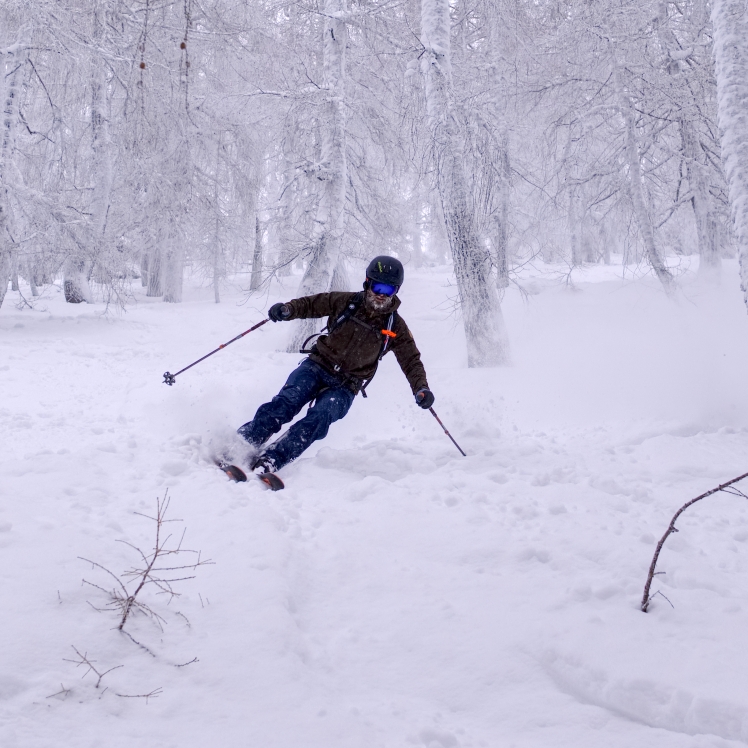
Conclusion
The Black Gate of the Ultralight series manages to combine uphill and downhill performance very well and still looks great. It was definitely developed for the freeride sector and also shows its strengths here. Due to its low weight, it allows a relaxed ascent, so you save power for driving down. The construction is well thought-out and makes itself noticeable in the driving performance, especially for runs with different requirements, the ski can exploit its potential. Despite its ultralight claim, it did not save on the wrong end, in my opinion a good compromise between durability and weight was found.
Compared to my other freeride ski (Black Crows Atris), it’s a lot lighter, but it does at least as much in terms of downhill skiing and even floats even better.
I’m really excited about this ski and I would definitely buy it again because of the great value for money!


